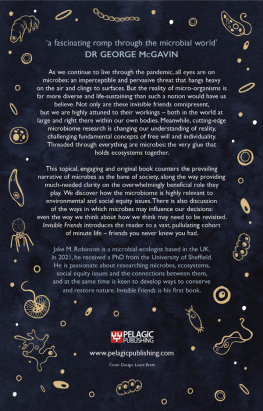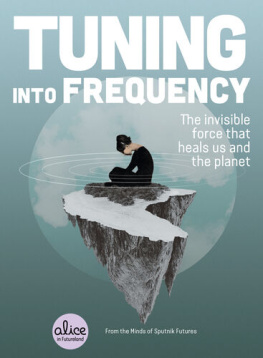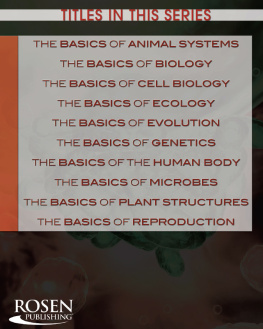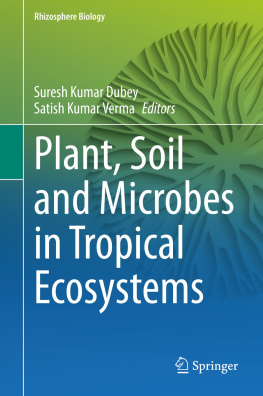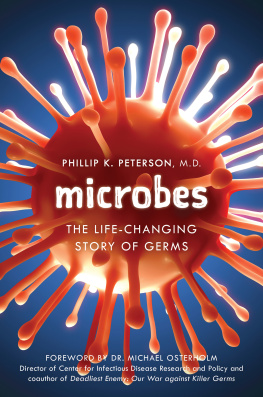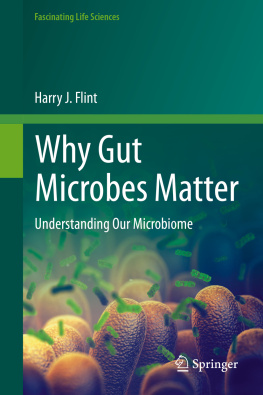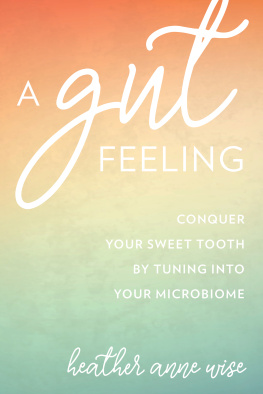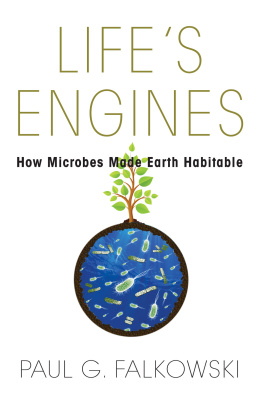Landmarks

Jake Robinson is the Gilbert White, the Henry David Thoreau, of the microbiome. His charmingly written book, a work of science leavened by literary allusion and engaging personal memoir, invites us to dive down through many powers of ten to the invisible level of microbes. Levels, rather, for microbes range in size from each other as much as we do from them. Microbes live in us, on us, through us, about us. Bacteria include the green photosynthesis specialists that inhabit the solar panels we call leaves, and are the ultimate source of all our food and oxygen. Each of our cells is an ecosystem of tiny biochemists, whose R and D we borrow to stay alive through every next second. Microbes invented antibiotics for their own protection, megayears before we hijacked them (and abused them) for ours. Micro-organisms are our foes, but our indispensable friends too. Do they even, as Robinson proposes, manipulate us and our behaviour to their, and our, benefit? Not just us but bumblebees and trees, and who knows what else? Do bacteria in clouds make rain, again to their advantage? Such suggestions, music to my ears, may prove controversial but nobody could fail to be intrigued.
Richard Dawkins
I enjoyed this book very much indeed. It was a fascinating romp through the microbial world and is definitely the sort of book that would make me miss my station. If you are not a microbiologist, you will be astonished at how much microbes affect, regulate and sustain your life, and Robinsons passion and enthusiasm for the world of the very tiny positively glows on every page.
Dr George McGavin
Robinson has crafted an immensely accessible and important book. It lifts the lid on the secrets of how our microbial world is so crucial to human and planetary health.
Prof. John F. Cryan, Principal Investigator in the APC Microbiome Institute, University College Cork
Invisible Friends is beautifully written, and packed with information about the tiny organisms that form the basis of life on Earth. From the microbes in our bodies to those on the International Space Station, Jake Robinson reveals a hidden world that we would be unwise to ignore.
Rebecca Nesbit, ecologist and author of Tickets for the Ark
With vivid detail, Dr Robinson has synthesized volumes of international research on microbes the end result is a concise, reader-friendly page-turner that will be of interest to a full spectrum of readers, from the general public to clinicians to researchers looking for the next big idea! Invisible Friends is just like the microbial world that surrounds us a companion filled to the brim with marvellous potential!
Prof. Susan Prescott, author of The Secret Life of Your Microbiome
Can bacteria really be our friends? Thankfully, yes! Invisible Friends provides a fantastic, whimsical, and engaging exploration of our friendship with microbes, a friendship ideally built on caring for each other.
Justine Dees, PhD, Founder of Joyful Microbe
Invisible Friends tells a wondrous and vital story, how our very being depends upon the unseen, a reality that can help redefine our broken relationship with nature.
Miles Richardson, Professor of Human Factors and Nature Connectedness, University of Derby
A remarkable book by a writer who really is fascinated about the wonders of the world. This book conveys an important message that our invisible friends rule the world and are vital to the health of our planet, including us humans.
Marja Roslund, Environmental Scientist, Natural Resources Institute Finland (Luke)
INVISIBLE FRIENDS
INVISIBLE FRIENDS
How Microbes Shape Our Lives and the World Around Us
JAKE M. ROBINSON
PELAGIC PUBLISHING
First published in 2023 by
Pelagic Publishing
2022 Wenlock Road
London N1 7GU
www.pelagicpublishing.com
Invisible Friends: How Microbes Shape Our Lives and the World Around Us
Copyright Jake M. Robinson 2023
All illustrations by the author unless otherwise stated.
The moral rights of the author have been asserted in accordance with the Copyright, Designs and Patents Act 1988.
All rights reserved. Apart from short excerpts for use in research or for reviews, no part of this document may be printed or reproduced, stored in a retrieval system, or transmitted in any form or by any means, electronic, mechanical, photocopying, recording, now known or hereafter invented or otherwise without prior permission from the publisher.
A CIP record for this book is available from the British Library
Aspects of Chapter 6 were published in the journal Science of the Total Environment in 2020. Aspects of Chapter 7 were published in the journal Frontiers in Psychology in 2021. Aspects of Chapter 11 were published in the journal Challenges in 2018. Aspects of Chapter 13 were published in the journal Frontiers in Microbiology in 2021.
ISBN 978-1-78427-433-7 Hbk
ISBN 978-1-78427-434-4 ePub
ISBN 978-1-78427-435-1 ePDF
ISBN 978-1-78427-442-9 Audio
https://doi.org/10.53061/NZYJ2969
Cover design: Laura Brett
Typeset in Chennai, India by S4Carlisle Publishing Services
I affectionately dedicate this book to my wife, Kate.
Contents
A s soon as the deep-scarlet sunrise burst from the horizon, the dew-draped meadow glistened like a sea of diamonds. A light breeze carried the scent of a changing season. It was springtime in 2006. I was camping on the semi-forested rolling hills of the Peak District in England. Prematurely awoken by a fleeting rain shower, sleep inertia came to an abrupt end as a potent earthy aroma wafted into the tent. However, at the time, I was completely unaware that my olfactory system the part of the body responsible for processing smells was allowing me to perceive signals from another world hidden within our own. A world that we cannot see with the naked eye, brimful of invisible biodiversity, a bustling microscopic metropolis. Initially, I probably thought, ahh, the smell of the countryside or the musky scent of a forest but then I asked myself, Why does it smell like this? What is responsible? Much to the annoyance of my parents, I have always been an inquisitive soul, asking questions at every opportunity. I trace some of this back to Mr Birch, a slightly eccentric teacher at my primary school in England.
Mr Birch was keenly interested in geology, and we used to swap rocks our nerdy take on a swap shop. Youre so cool, my sisters would say, sarcastically of course. I remember bringing Mr Birch a small chunk of sedimentary rock I had found in the local nature reserve, and him exchanging it for a gnarly piece of igneous rock, or solid lava. Wow, is this from a volcano? I asked. Yes, Mr Birch responded. To my surprise, he told me he had found this volcanic rock in England. I was suitably confused for a seven-year-old. I had travelled around the British Isles to see all the great Norman and Anglo-Saxon castles one of my fathers hobbies but never once had I seen a volcano. As far as I was concerned, a volcano was a gigantic rocky cone spewing red-hot lava, consuming everything in its path. Mr Birch explained that the area we today know as England once contained many active volcanoes. The rock he gave me was a fragment of one of these, formed thousands of years ago.
I was amazed and still slightly confused. Mr Birch responded with words to the effect that There is more to the world than we initially perceive. And remember, the most important word in the world is why? From this point on, at every opportunity, I would say to my parents and probably everyone around me, Thats interesting, but why? Why is this the case? Why did that happen? I now see this as both a curse and a blessing. This constant questioning from an untempered child was undoubtedly annoying for the recipient. However, it opened the door to a world of fascination. What else exists in the world that we cannot see? What happens in the world that we may not initially notice? Does what we perceive of the world match the reality? Is everything we thought we knew about the universe even true? These profound questions would both overwhelm and excite me as a child and they continue to do so even now.

